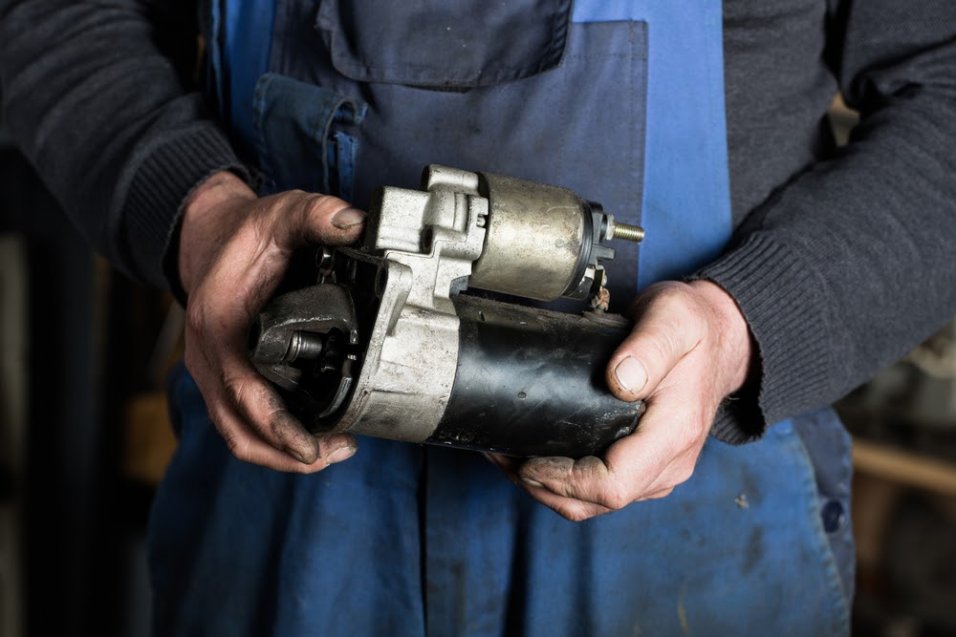Knowing When The Starter Motor Is Bad
Signs of a Bad Starter Motor and knowing the differences
Few automotive inconveniences are as frustrating as a car that refuses to start, and not understanding why. When you turn the key in the ignition and are met with nothing but silence or a feeble attempt at cranking, it's easy to feel a sense of panic. While there can be various reasons behind a car's failure to start, a common culprit is a malfunctioning starter motor.
In this article, we are going to explore the signs of a bad starter motor and also unfold differentiating factors that might point to issues frequently mistaken for a bad starter motor, including the battery, a relay, or a fuse.
As always, it's best to use Auto Monkey's App and request a diagnostic from one of our vetted and qualified mechanics if you're any less than 100% certain of the issue. This frequently saves you money, time and frustration in the end as it results in faster repairs and results.
Having said that...let's move on.

Common Signs of a Bad Starter Motor
-
No Cranking Noise:
When you turn the key, the engine should crank. If you hear a clicking sound but the engine doesn't turn over, it could indicate a bad starter motor. -
Grinding Noise:
A grinding noise when starting the car may suggest a problem with the starter gear not engaging properly. This can lead to damage to both the starter and flywheel. -
Freewheeling:
Freewheeling occurs when you hear a whirring noise without any attempt from the engine to crank. This could signal a bad starter motor or a damaged starter solenoid.
Diagnosing The Starter Motor
Diagnosing a bad starter motor requires a systematic approach, ruling out other potential issues like a dead battery, bad relay, or blown fuse. By understanding the distinctive signs of each problem, you can narrow down the possibilities and address the underlying issue efficiently. These 4 diagnostic steps will help you identify if the starter motor is actually bad or not.
Please note that some of these steps may be challenging for the average car owner given the need of specialty tools and experience. If you're unsure about your findings or lack the necessary tools and expertise, it's probably best to consult a professional mechanic. To do this we suggest using the Auto Monkey App, it's easy, inexpensive and repairs frequently are completed within 1 to 3 days. Professionals can quickly, yet thoroughly, conduct a comprehensive assessment.
Moving on.
-
Visual Inspection:
Examine the starter for visible damage, loose connections, corroded or stripped wires. These issues can impede the flow of electrical current to the Starter Motor. If any of these things are present, it's likely your starter motor isn't the problem after all and you may need to replace the wiring to provide the required voltage needed to engage the starter motor. -
Voltage Test:
Use a multimeter to measure voltage between the starter terminals and the starter. Voltage should read at least 12.25 volts. A reading close to battery voltage indicates a good connection. If voltage is low, it's either a break in the cable, a loose connection, or bad battery. -
Starter Solenoid Test:
If the solenoid is separate, check for a clicking sound when the key is turned. If absent, the solenoid might be faulty. Frequently the Starter Motor and Starter Solenoid are a package deal as the solenoid is strapped to the back of the motor itself. There is a hot wire that connects the two. When the circuit is completed the solenoid fires up the motor which engages the engine's fly wheel to turn the pistons creating the combustion required to put everything into motion. -
Starter Bench Test:
This is an expert level diagnostic. Performing this without the proper tools and knowledge can result in injury. Remove the starter and perform a bench test using jumper cables or starter motor test kit. A bench test can help determine if the starter motor is functioning outside the vehicle. A more simple effective method to do a bench test is using a starter motor trigger. This tool has 2 cables connected to a trigger. By connecting one cable to the battery's positive lead, and the other to the solenoid lead you can do a bench test without removing the starter motor at all.
